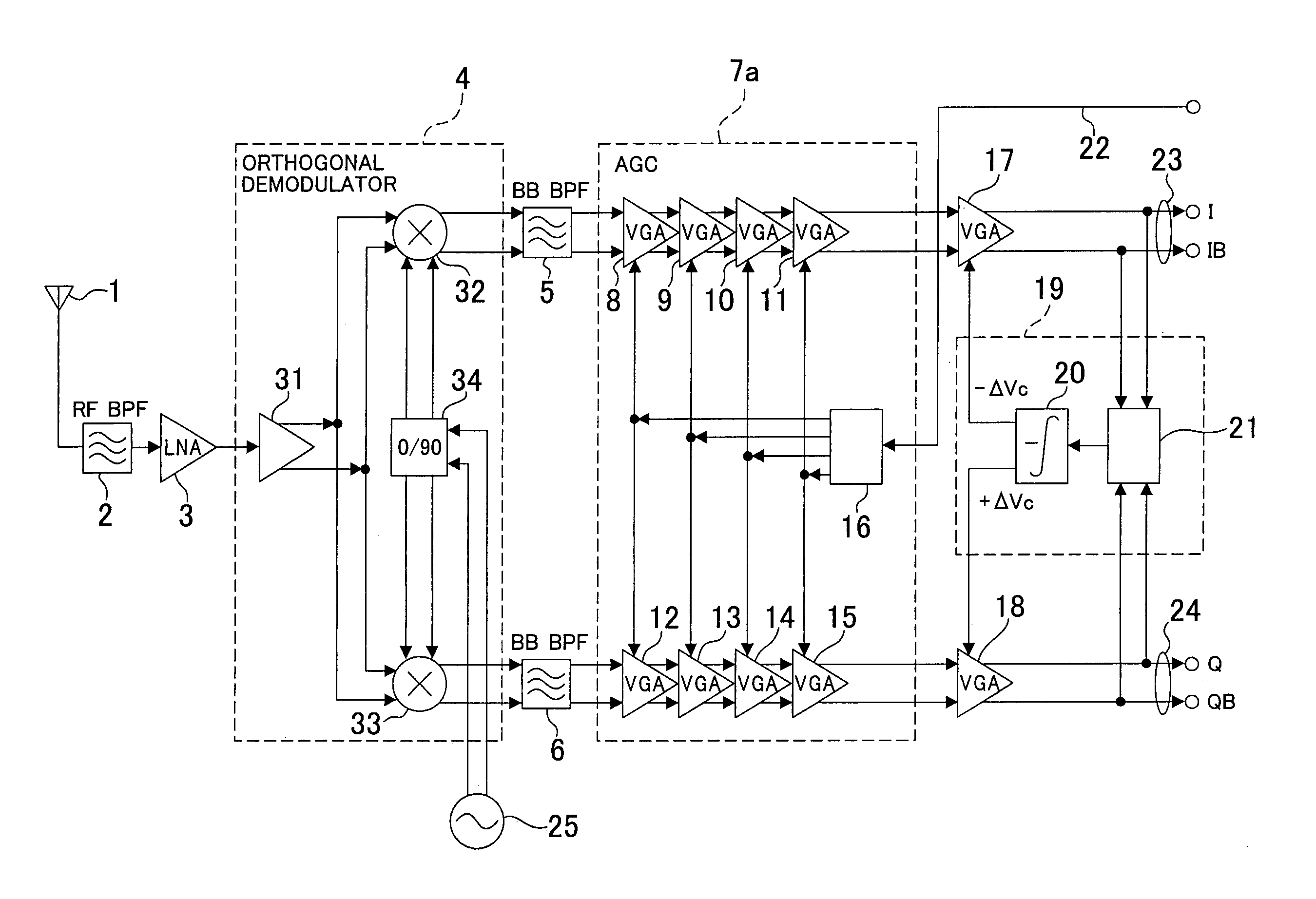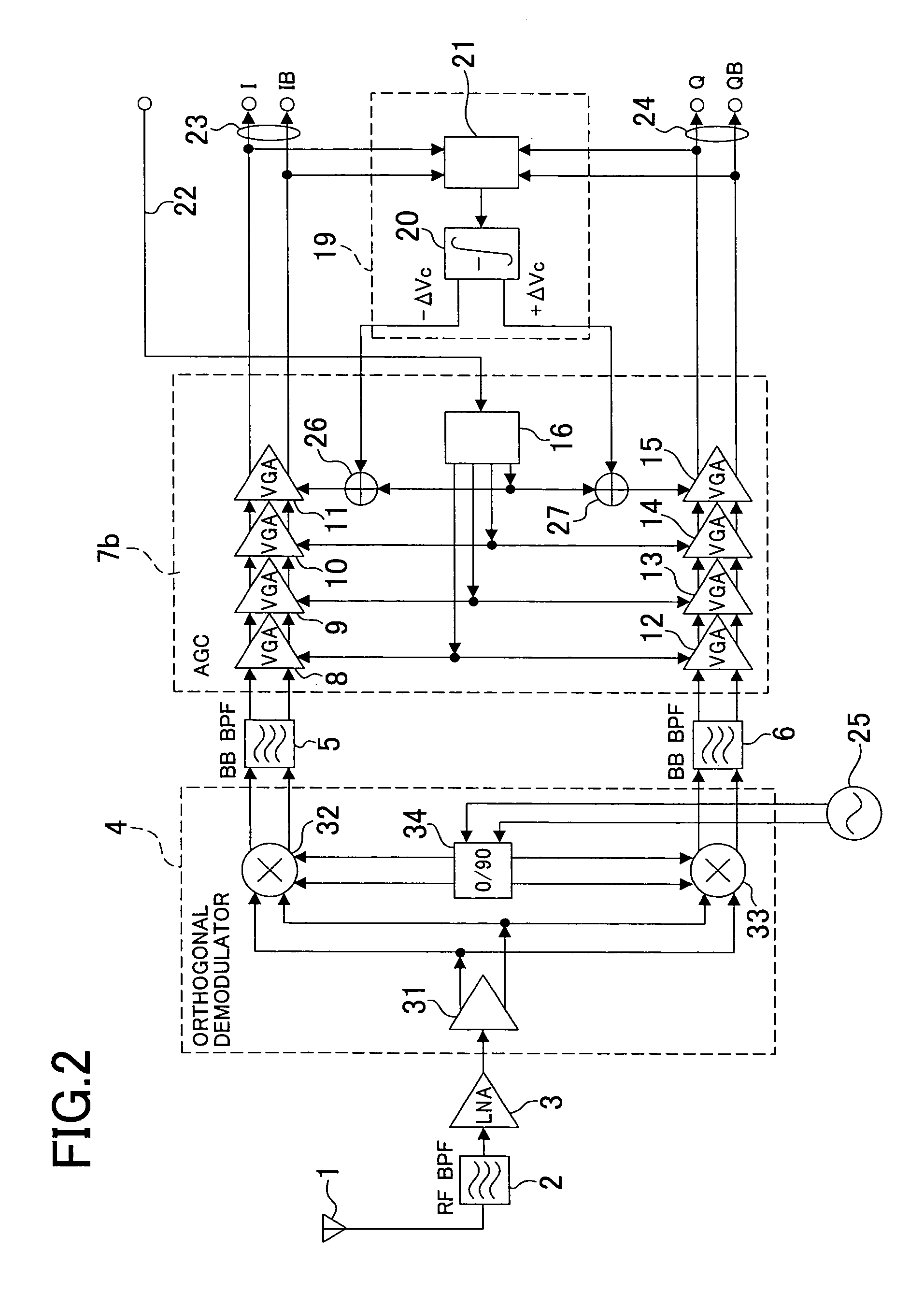Amplitude deviation correction circuit
a correction circuit and amplitude technology, applied in the field of amplitude deviation correction circuits, can solve the problems of difficult miniaturization of circuits, difficult to use large-scale integrated circuits, and difficulty in reducing the number of parts in the futur
- Summary
- Abstract
- Description
- Claims
- Application Information
AI Technical Summary
Benefits of technology
Problems solved by technology
Method used
Image
Examples
Embodiment Construction
[0030]Referring to FIG. 1, there is shown an amplitude deviation correction circuit to which the present invention is applied. The amplitude deviation correction circuit is incorporated in a receiver of the direct conversion system which includes an antenna 1, a radio frequency band-pass filter 2, a low noise amplifier 3, an orthogonal demodulator 4 which includes an amplifier 31, a pair of double-balanced mixers 32 and 33, and a 90° phase branching unit 34, a pair of baseband filters 5 and 6, and an AGC circuit 7a which includes variable gain amplifiers 8 to 15 and a gain controlling voltage generation circuit 16. The elements of the receiver mentioned are all similar to those of the receiver of the direct conversion system described hereinabove with reference to FIG. 6, and therefore, overlapping description is omitted herein to avoid redundancy. The amplitude deviation correction circuit according to the present invention is positioned following the AGC circuit 7a.
[0031]The ampl...
PUM
 Login to View More
Login to View More Abstract
Description
Claims
Application Information
 Login to View More
Login to View More - R&D
- Intellectual Property
- Life Sciences
- Materials
- Tech Scout
- Unparalleled Data Quality
- Higher Quality Content
- 60% Fewer Hallucinations
Browse by: Latest US Patents, China's latest patents, Technical Efficacy Thesaurus, Application Domain, Technology Topic, Popular Technical Reports.
© 2025 PatSnap. All rights reserved.Legal|Privacy policy|Modern Slavery Act Transparency Statement|Sitemap|About US| Contact US: help@patsnap.com



